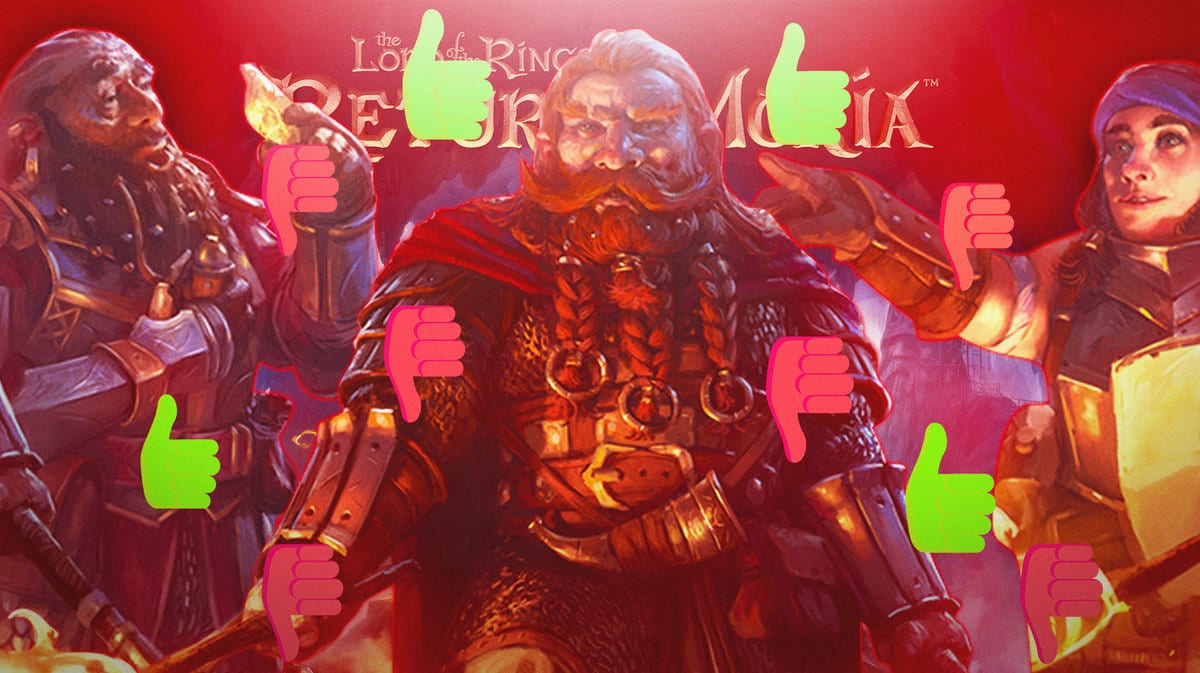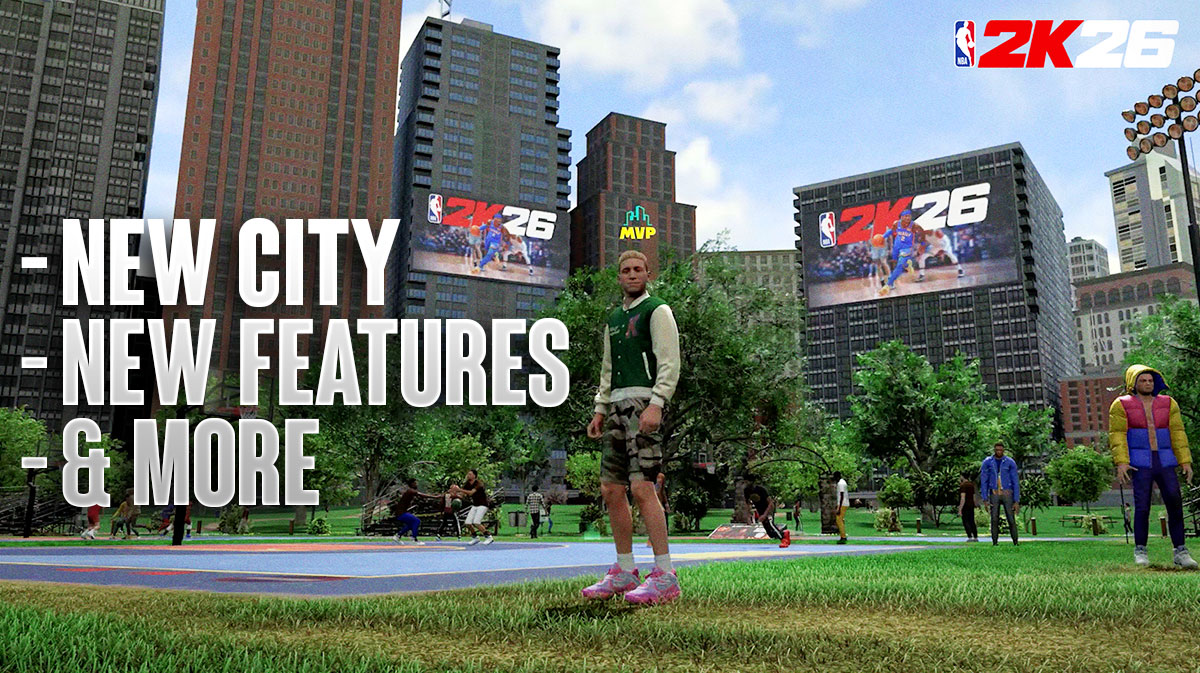The Lord of the Rings Return to Moria is the latest video game set in Middle-Earth, but it probably flew under your radar if you haven't been following it in the first place. Very little marketing was made for this game, even if its premise is exciting for The Lord of the Rings fans. In this Return to Moria review, we take a look at the merits of this game and see if it can stand on its own feet with its gameplay and story and if it's worth playing even if you're not a Lord of the Rings fan.
Return to Moria Review: What is Return to Moria?
The Lord of the Rings: Return to Moria is a survival base-building multiplayer game with procedural worlds. The game was released on PC through the Epic Games Store on October 24, 2023. A PS5 release is expected to arrive on December 5, 2023, followed by an Xbox Series X release in 2024. The game was developed by Free Range Games and was published by North Beach Games.
The Lord of the Rings: Return to Moria lets players become a part of a company of dwarves spelunking into the Mines of Moria with the objective of reclaiming dwarves' ancestral homeland of Khazad-dum and restoring it to its former glory. Along the way, players will have to deal with perilous environments, sneaky goblins, monstrous beasts, and dangerous magic. The dwarves will have to dig through the Mines of Moria while they search for riches and lost settlements.
As a survival base-building game, players will explore locations, collect resources, craft items, and build structures. The game can be played single-player in its own procedural world, which can then be opened to host seven more players for a total of an eight-player session. The Lord of the Rings: Return to Moria lets players explore the depths of Middle-earth's most iconic mines, discover riches, craft powerful weapons, and build wondrous settlements, while also fighting against some of the most devious creatures to exist in Middle-earth.
Return to Moria Gameplay
Return to Moria's gameplay gets a lot of things right, and it's an entirely average survival game. At worst, you're playing this game because the idea of playing a survival base-building game set in Middle-earth appeals to you. However, I don't think any survival game enthusiast who isn't as interested in the subject matter would go out of their way to play this game.
If you're playing alone, be prepared for the grind. The game has a very poor crafting economy, with many items requiring way too many raw materials to create. This is already present in the most basic coal, which requires 25 wood fragments to craft. The Stone Hearth, an early-game structure that's needed to set up new bases, requires 18 stone, 15 coal, and 18 wood fragments. That's a lot of raw materials needed for something as basic as a hearth, with one of the components being a prerequisite of the other making it very tedious to craft most of the time.
The game's worst aspect is its combat which is as basic as it gets. While players can craft and equip weapons, shields, and armor, combat never feels satisfactory in this game. It would have been fine if combat didn't play a big part in the game, but the game wants you to engage in combat quite a lot. Raids of goblins and encounters with wolves in the wild never felt fun for me, as the game controls like an early 2000s action game. There is also little variety in how you can fight and fighting almost immediately became a chore. I honestly believe that this game would do better with less fighting, and I'm somehow saying that about a Lord of the Rings game.
In terms of its base-building offerings, Return to Moria gives players competent architecture mechanics and the game's building logic is sound. Building is also very easy to pick up and learn. The only fault the game has on this department is its bad aiming and poor hitboxes. Most of the time, I tend to hit things I didn't intend to hit. There's no way to be more accurate with your interactions with objects in the world, and I almost always hit the floor even if I'm just trying to hit something on top of it.
Perhaps what I liked the most about Return to Moria is how you don't always need to start from scratch when building a new base. Throughout the Mines of Moria, players will discover long-abandoned outposts, buildings, and forges, waiting for players to revitalize and claim them as their own. Instead of always having to create a new base as you explore deeper into the mines, the game instead offers you pre-built bases that you only need to refurbish. This saves a lot of time from gathering materials and, to some extent, planning, although it does take away a lot of creative expression.
As with other games from this genre, playing the game is so much more fun with friends. Allowing players to party up with up to eight dwarves in a single session is great, and the presence of other dwarves in the game world is always welcome. Having more dwarves around helps solve the game's resource management economy problems and actually makes exploring the game much more fun. Even fighting becomes more fun in spite of its jankiness when you're with friends.
The game's procedural nature for me isn't very important. I wouldn't have minded a singular world that we can explore. I think the game would have benefitted from a more handcrafted world, as the developers were obviously great at creating locations and making them feel breathtaking. If the design of the Mines of Moria was more deliberate, I think it would have been for the better. It being procedural does add to the game's gameplay variety and longevity, but the opportunity cost was more streamlined storytelling and more awe-inspiring landscapes.
Return to Moria Graphics
Return to Moria isn't very impressive graphics-wise. While they definitely aren't ugly, the models for the characters, enemies, and fauna in the game aren't impressive, with models looking like they were from ten years ago. Thankfully, the game does inspire amazement in the grandeur and appearance of its set pieces, with amazing sights to be seen and interesting locations to explore. The strongest assets of Return to Moria's graphics are its buildings, structures, and environments. It's a shame, however, that the game's wonderful locations aren't inhabited by equally good-looking living beings.
Much worse is how the game's animations look. They are very rudimentary, and although serviceable, they are not very good-looking. Perhaps the worst offense that the game's animations have is its inaccuracy, how animations appear to hit or not hit objects, with wildly inaccurate hitboxes of models and objects to boot.
Thankfully, the game has a decent UI and is actually very easy to learn and use. If you've played a survival game before, you'd feel at home with Return to Moria's menus. The game also has nice-looking icons for its items, although the actual models for the objects aren't as good-looking.
Return to Moria Story
Return to Moria's story serves as a MacGuffin for the game, an excuse to send dwarves into the Mines of Moria so that we can have a multiplayer game set in Middle-Earth. It's not bad per se, but survival games like this don't really need a strong story for them to work. For Return to Moria, it's a great setting that gives players purpose for their continuous exploration of the Mines and gives the entire journey a singular purpose, making the experience much more personal.
The progression of the story and how it's told isn't perfect, however, as most of the game's story is told through expository dialogue and expository journal entries. It's a shame that there isn't much in the way of cutscenes in the game that could have told the game's events better apart from the initial cutscene at the start of the game.
Regardless, Return to Moria's story is compelling enough to make me want to start the journey, and it's a good enough excuse for Lord of the Rings fans to take part in this title. The stakes are low, with the game being set in the peaceful era of The Fourth Age, but that also works positively for the game. There's no rush, no a lot of pressure to succeed, but there's a huge potential for success, and the rewards are big.
Return to Moria Music and Sound Design
Return to Moria's music and sound department is by far its worst aspect. When I think about The Lord of the Rings, I always think of epic marvels, of Howard Shore's emotional scores. Return to Moria is most of the time soulless thanks to the lack of music. It is utterly silent for the most part, making this multiplayer game feel lonely at times.
Oftentimes, the dwarves will start singing while mining for ore, but that's pretty much all of the music you'll hear from this game for the most part.
The game's sound effects are fine as they are, and the voice acting is also serviceable. While the developers heavily advertised the participation of John Rhys-Davies in his reprisal as the voice of Gimli, there wasn't enough of him for it to actually matter.
Verdict: Is Return to Moria worth your time and money?
Return to Moria is an average at best, abysmal at worst title that has little to offer aside from the IP it is based on. There are a ton of better survival games out there with better base-building mechanics and better exploration experience that make this game hard to recommend save for the most diehard of the Lord of the Rings fans. While the game is only $40 and not a full-priced game, there are better-made survival base-building games out there that are priced lower. There's a certain charm in the game's jankiness, but a completely polished game this isn't. Aside from its uniqueness as a Lord of the Rings game, there's not a lot to love about Return to Moria.
Score: 5/10
Editor's Note: ClutchPoints received a PC review copy of The Lord of the Rings: Return to Moria to allow us to cover the game. These copies did not, in any way, affect this The Lord of the Rings: Return to Moria review and score.



















